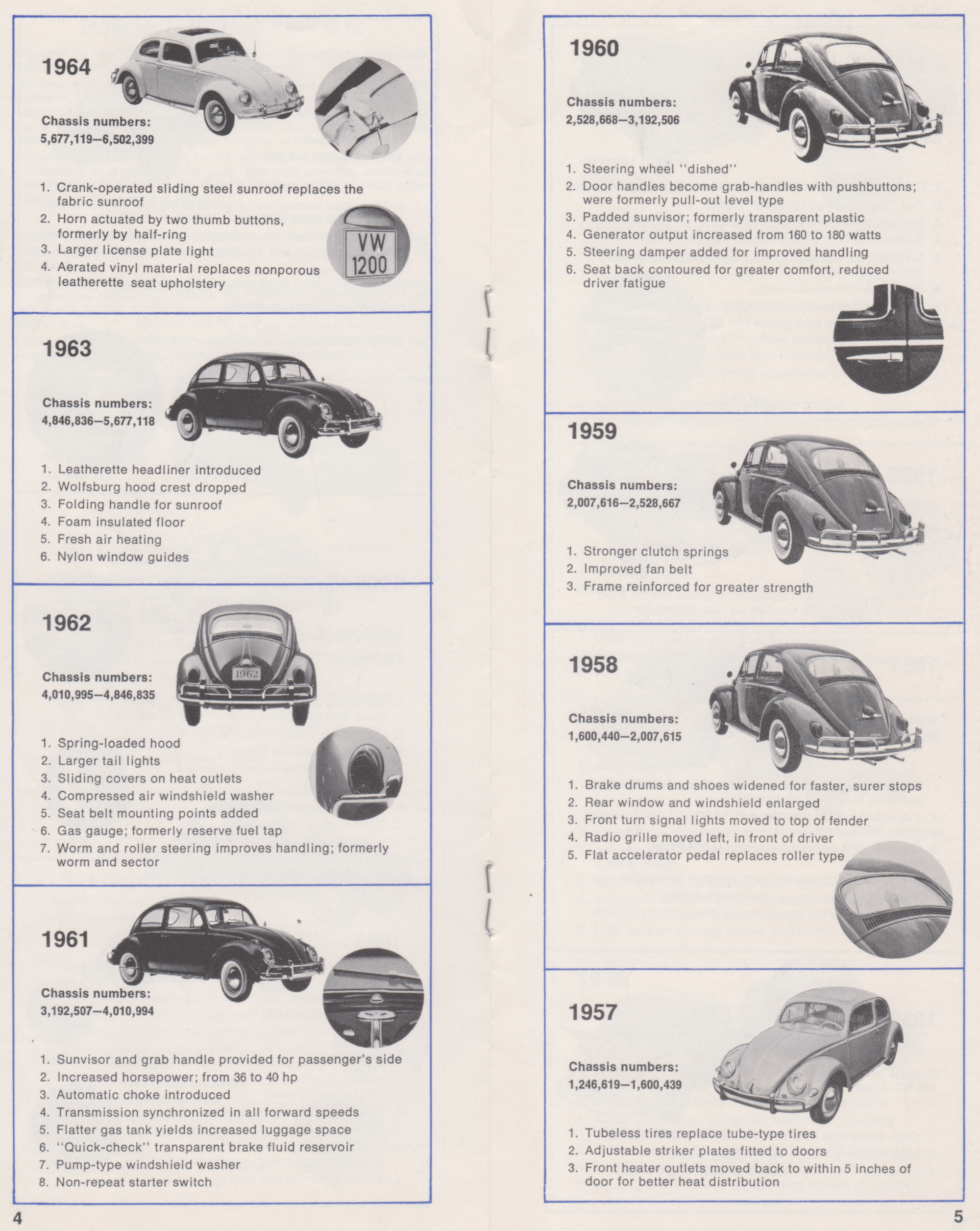This handy spotter's guide for identifying the vintage of particular VW Beetles was acquired at the time of our parents' purchase of the second of three Beetles. The whole family (5 people) learned to drive from scratch on Beetles with standard transmissions. They were the only vehicle on our family's roster for almost three decades.
For a while, in the 'good old days' of post-war prosperity (the 1950s and 1960s), the US manufacturers Chrysler, Ford and General Motors ('The Big Three') were often promoting the idea of annually trading in one's car for the latest model. Many people were driven by advertising to keep up with the mythical 'Joneses' next door. To encourage this wasteful, expensive practice, cosmetic changes were deliberately made to a model's external appearance each year: rear-body fins, pretend aircraft exhaust ports in the front quarter panels, and tail-lights shaped like jet afterburner flame cones are some of the 'coolest' gimmicks which come to mind.
Across the clear-cut front lawns of the new 'clean and safe' suburbs, everyone could see your car!
... It should be noted that the latest cool-looking automobiles and the exhilarating 'Freedom of the Open Road' were probably more revered by Liberty-loving Americans ... than by anglophone Canadians early in the Canadian television era.
Canadians actually fought for their Freedom with tire chains, snow tires, block heaters, sand, old sawed-off shovels and brooms, and Frost Shields.
Canadians cherished the freedom of the Plowed-Open Road.
The diametric opposite of the American Big Three's annual new car smell compulsion was the VW Beetle - for which reverse snobbery eventually manifested itself in owners who dared others to guess their car's model year. More energy was spent improving the engineering and functioning of the car than in cosmetic changes - said these true-believers. Without Canadian tariffs* on other auto brands protecting the Big Three - which made VWs and replacement parts ridiculously expensive - probably even more Beetles would have been sold in Canada.
(*Southern Ontario autoworker jobs preserved by the Canada-US Autopact of 1965 provided a good living wage with minimal education. However, workers often complained the work was dehumanizing, repetitive and boring - requiring them to repeat the same particular motion over and over for an entire shift.)
If the Mad Men TV series provided an accurate depiction of contemporary American advertising professionals' attitudes toward the Beetle ...
The Don Draper character thought the 1960s era VW print and TV advertising were pure genius. As an example, a newspaper ad title 'It's ugly, but it gets you there' was shown over two photos - a Beetle juxtaposed with the Lunar Excursion Module of NASA's Apollo Project.
In contrast, a co-worker of Draper's had a typical American post-war contempt for the car. He quipped: 'The last time I saw one of those, I threw a hand grenade into it!'
... I love that 'historical joke' because it fairly and accurately acknowledges the history of the Volkswagen's development, as well as reflecting that ex-soldier's military service in the Second World War when he actually saw the Kübelsitzwagen.
Eventually, the VW Beetle was discontinued because of legislative changes which improved the safety of all North American vehicles. We were very fortunate never to have had a serious collision in one.
They were great little cars for their era.
 |
| from: Fix Your Volkswagen; Larry Johnson; 1974; Goodheart Willcox Co. |




